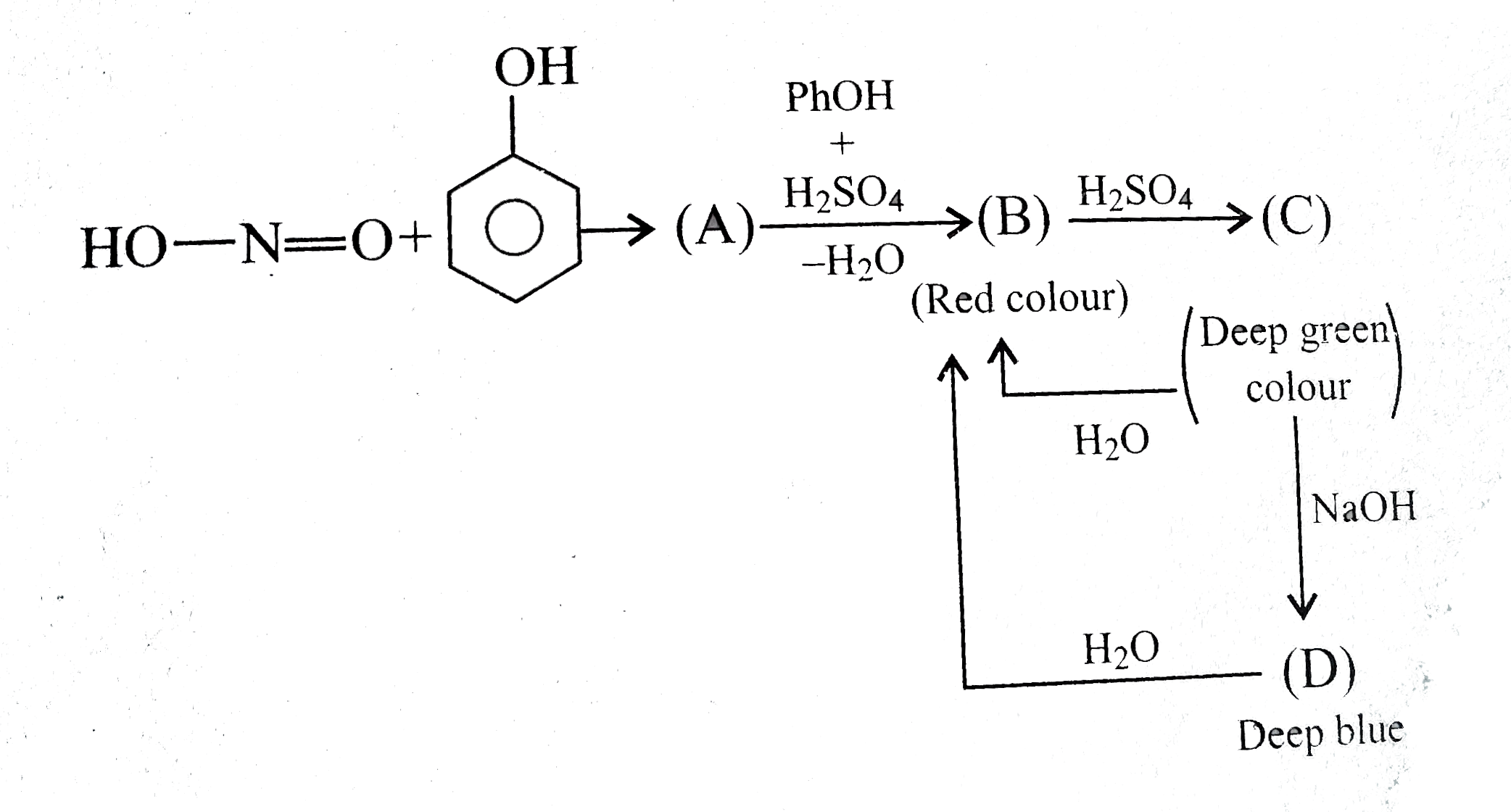There is blue colour formation if:
Cu electrode is placed inside AgNO3 solution
Cu electrode is placed inside ZnSO4 solution
Cu electrode is placed inside dil HNO3
Cu electrode is placed inside dil H2SO4
The correct Answer is:A, C
To determine the conditions under which blue color formation occurs, we need to analyze the reactions involving copper electrodes and silver nitrate solutions. Here’s a step-by-step solution to the question:
Step 1: Understanding the Context
We need to identify the scenarios where blue color formation is observed. The blue color typically indicates the presence of copper ions in solution, which can occur when copper reacts with certain solutions.
Step 2: Analyzing the Reaction with Silver Nitrate
When a copper electrode is placed in a silver nitrate (AgNO3) solution, a reaction occurs:
- The copper metal displaces silver from the silver nitrate solution.
- The reaction can be represented as:
2AgNO3+Cu→Cu(NO3)2+2Ag
- This reaction produces copper(II) nitrate, which is blue in color, and silver metal precipitates out.
Step 3: Observing the Blue Color Formation
The blue color formation is due to the presence of copper(II) ions (Cu²⁺) in the solution:
- The solution turns blue as copper(II) nitrate dissolves in water.
Step 4: Considering Other Scenarios
1. Copper in AgNO3 Solution: As discussed, this will lead to blue color formation.
2. Copper in HNO3 Solution: When copper is placed in dilute nitric acid (HNO3), it also produces copper(II) ions, resulting in a light blue solution:
- The reaction can be represented as:
Cu+4HNO3→Cu(NO3)2+2NO2+2H2O
- This reaction also leads to the formation of a blue solution due to the presence of Cu²⁺ ions.
Step 5: Conclusion
Based on the analysis, blue color formation occurs in the following scenarios:
- When a copper electrode is placed in AgNO3 solution (producing Cu(NO3)2).
- When a copper electrode is placed in dilute HNO3 solution (also producing Cu(NO3)2).
Final Answer
The correct options for blue color formation are:
- Option 1: Copper electrode in AgNO3 solution.
- Option 3: Copper electrode in HNO3 solution.
---
We need to identify the scenarios where blue color formation is observed. The blue color typically indicates the presence of copper ions in solution, which can occur when copper reacts with certain solutions.
When a copper electrode is placed in a silver nitrate (AgNO3) solution, a reaction occurs:
- The copper metal displaces silver from the silver nitrate solution.
- The reaction can be represented as:
2AgNO3+Cu→Cu(NO3)2+2Ag
- This reaction produces copper(II) nitrate, which is blue in color, and silver metal precipitates out.
The blue color formation is due to the presence of copper(II) ions (Cu²⁺) in the solution:
- The solution turns blue as copper(II) nitrate dissolves in water.
1. Copper in AgNO3 Solution: As discussed, this will lead to blue color formation.
2. Copper in HNO3 Solution: When copper is placed in dilute nitric acid (HNO3), it also produces copper(II) ions, resulting in a light blue solution:
- The reaction can be represented as:
Cu+4HNO3→Cu(NO3)2+2NO2+2H2O
- This reaction also leads to the formation of a blue solution due to the presence of Cu²⁺ ions.
Based on the analysis, blue color formation occurs in the following scenarios:
- When a copper electrode is placed in AgNO3 solution (producing Cu(NO3)2).
- When a copper electrode is placed in dilute HNO3 solution (also producing Cu(NO3)2).
The correct options for blue color formation are:
- Option 1: Copper electrode in AgNO3 solution.
- Option 3: Copper electrode in HNO3 solution.
Topper's Solved these Questions
- ELECTROCHEMISTRYBOOK - ERRORLESS CHAPTER - ELECTROCHEMISTRYEXERCISE - Jee Section (Reasoning type question)
3 Videos
- ELECTROCHEMISTRYBOOK - ERRORLESS CHAPTER - ELECTROCHEMISTRYEXERCISE - Jee Section (Comprehension Type question)
13 Videos
- ELECTROCHEMISTRYBOOK - ERRORLESS CHAPTER - ELECTROCHEMISTRYEXERCISE - Jee Section (Only one choice correct answer)
43 Videos
- D & P-BLOCK ELEMENTSBOOK - ERRORLESS CHAPTER - D & P-BLOCK ELEMENTSEXERCISE - JEE Section (Numeric answer type questions)
2 Videos
- ENVIRONMENTAL CHEMISTRYBOOK - ERRORLESS CHAPTER - ENVIRONMENTAL CHEMISTRYEXERCISE - CRITICAL THINKING (Objective question )
16 Videos
Similar Questions
Knowledge Check
The Lassaigne's solution when heated with ferrous sulphate and acidified with sulphuric acid gave intense blue colour indicating the presence of nitrogen. The blue colour is due to formation of:
A(a)Na4[Fe(CN)6]B(b)Fe3[Fe(CN)6]2C(c )Fe2[Fe(CN)6]D(d)Fe4[Fe(CN)6]3
The deep blue colour of compound (D) is due to the formation of:Aa. Bb.
Bb. Cc.
Cc. Dd.Both (a) and (b).
Dd.Both (a) and (b).The Prussian blue colour obtained in the Lassaigne' s test for nitrogen is due to the formation of
AIron (II) hexacyanoferrate (III)BIron (III) hexacyanoferrate (II)CIron (III) hexacyanoferrate (III)DSodium hexacyanoferrate (III)
The prussian blue colour obtained during the test of nitrogen by Lassaigne's test is due the formation of :
View SolutionThe prussian blue colour obtained during the test of nitrogen by Lassaigne's test is due to the formation of:
View SolutionThe Prussian blue colour obtained during the test of nitrogen by Lassaigne's test is due to the formation of:
View SolutionThe deep blue colour obtained on adding K Fe(CN), to ferrous sulphate is due to the formation of
View SolutionThe prussian blue colour obtained during the test of nitrogen by Lassiagne's test is due to the formation of
View Solution
